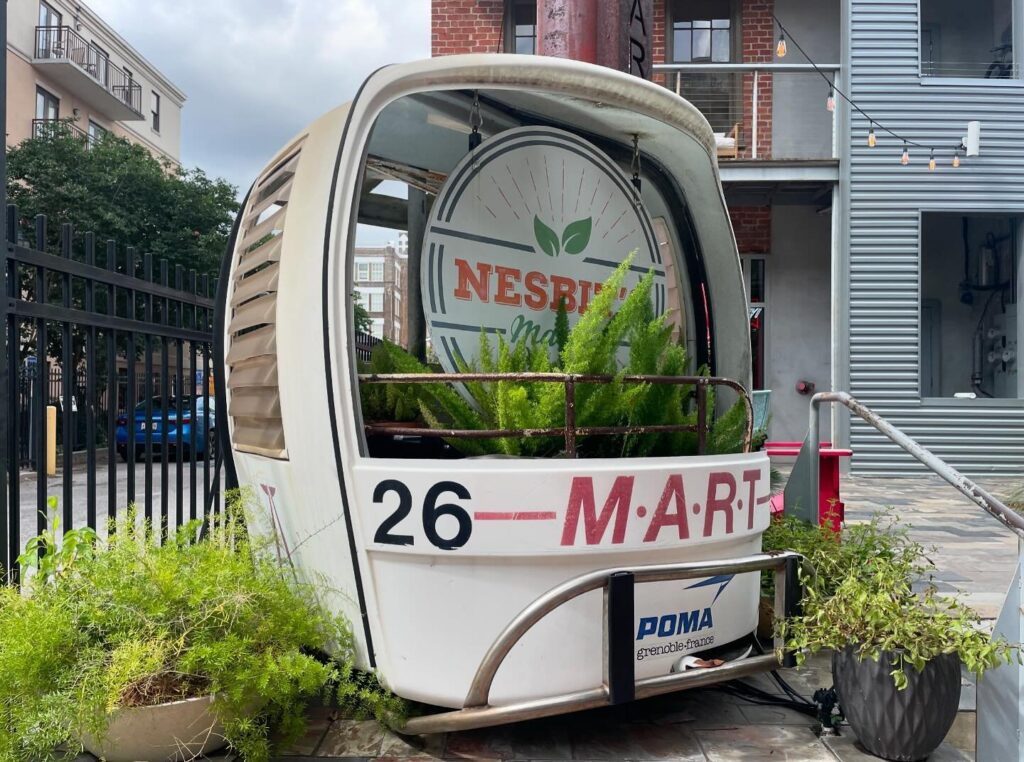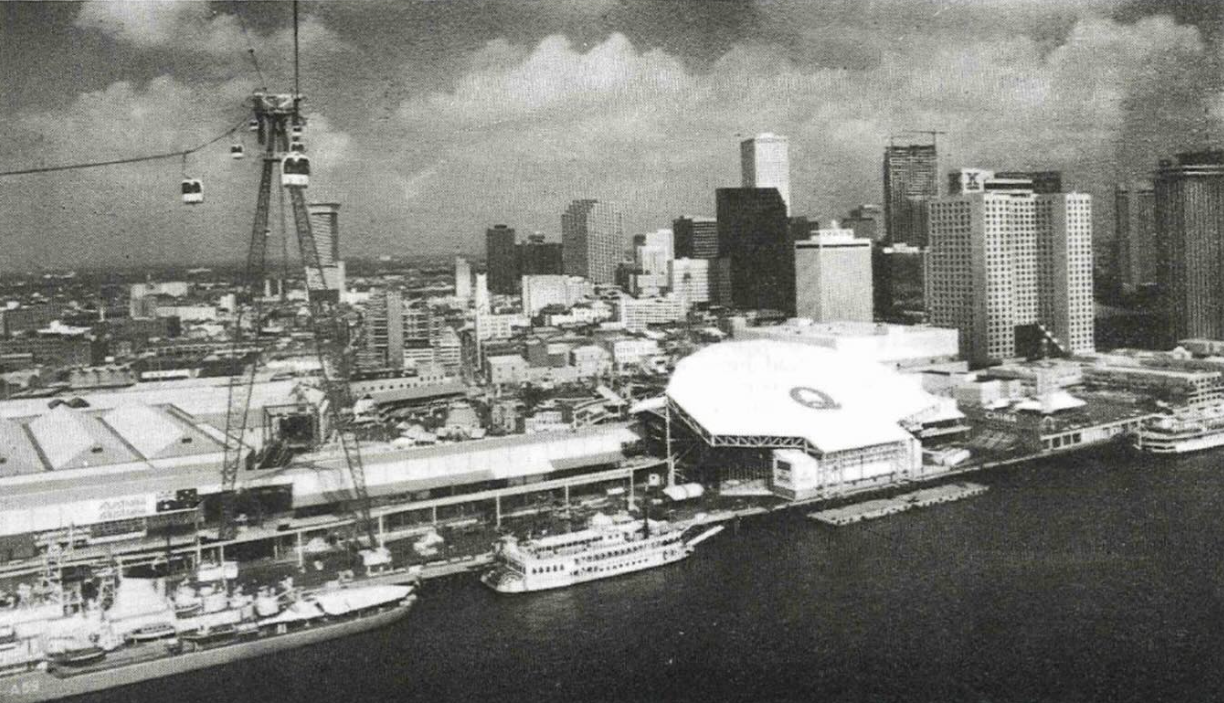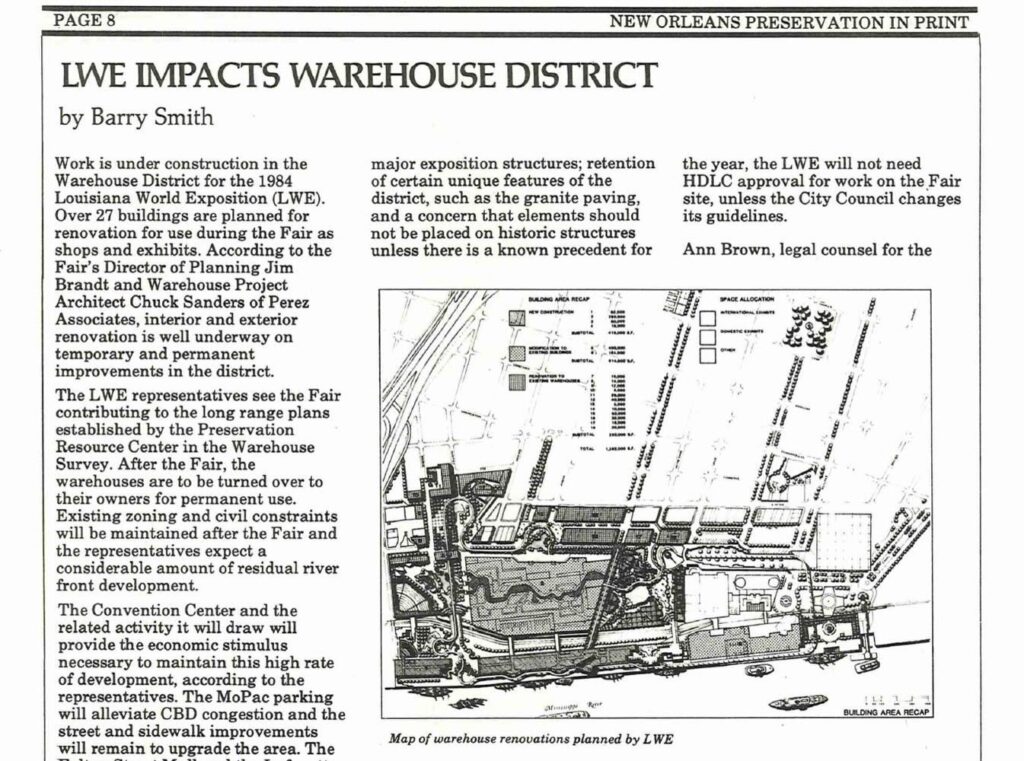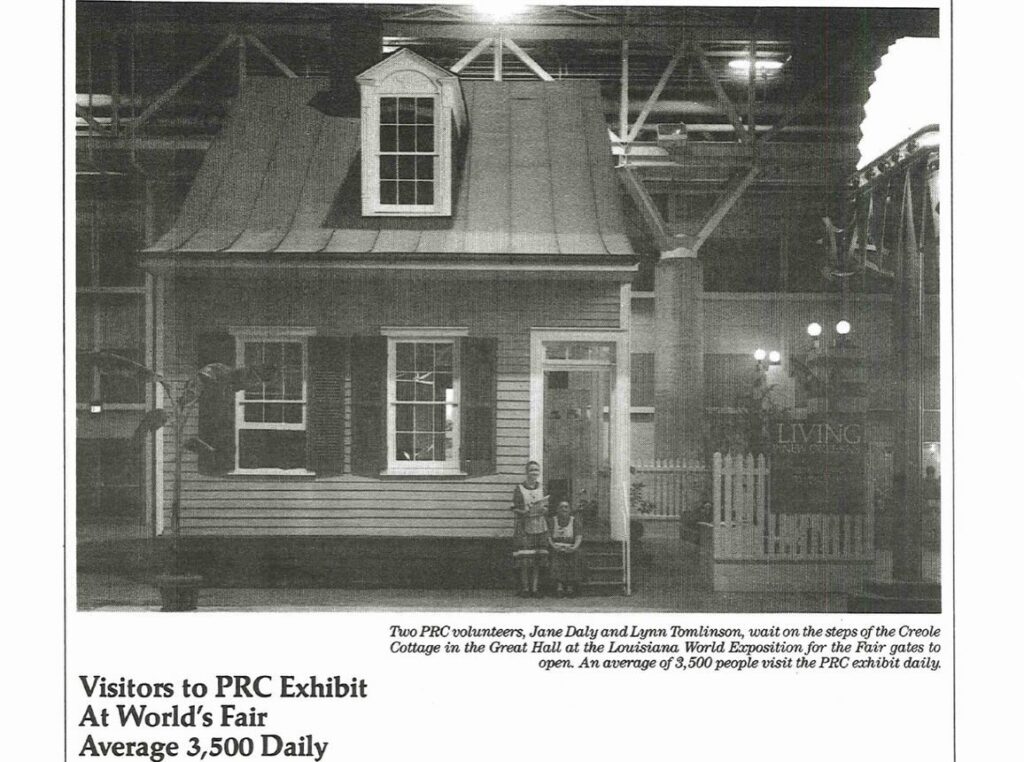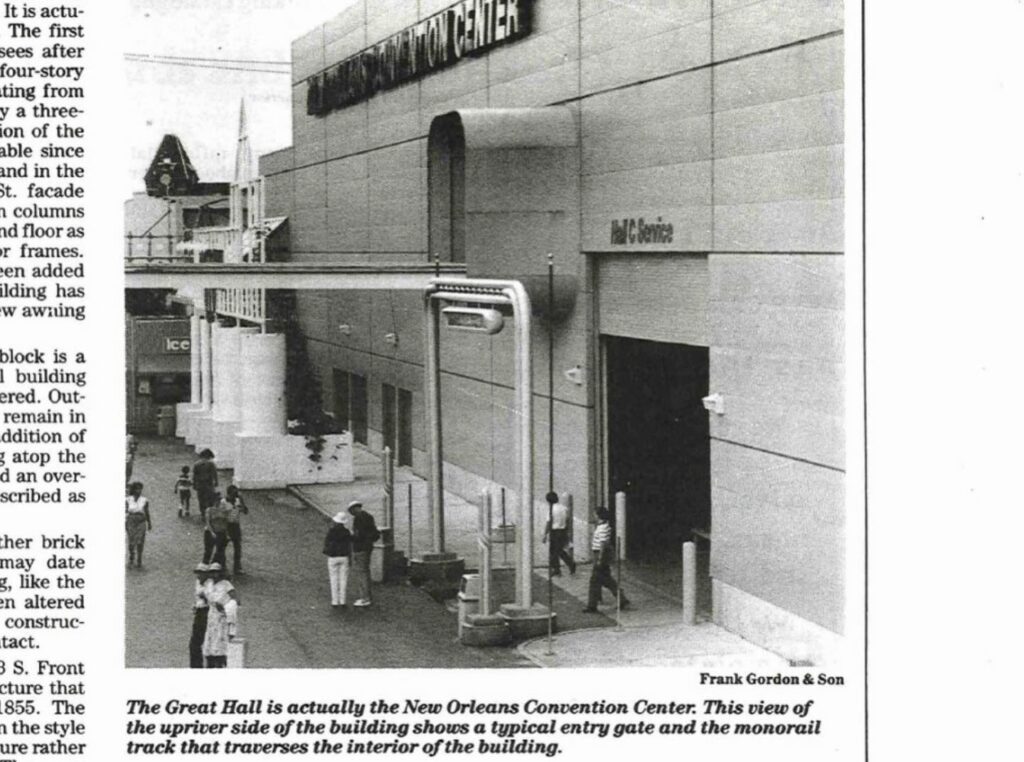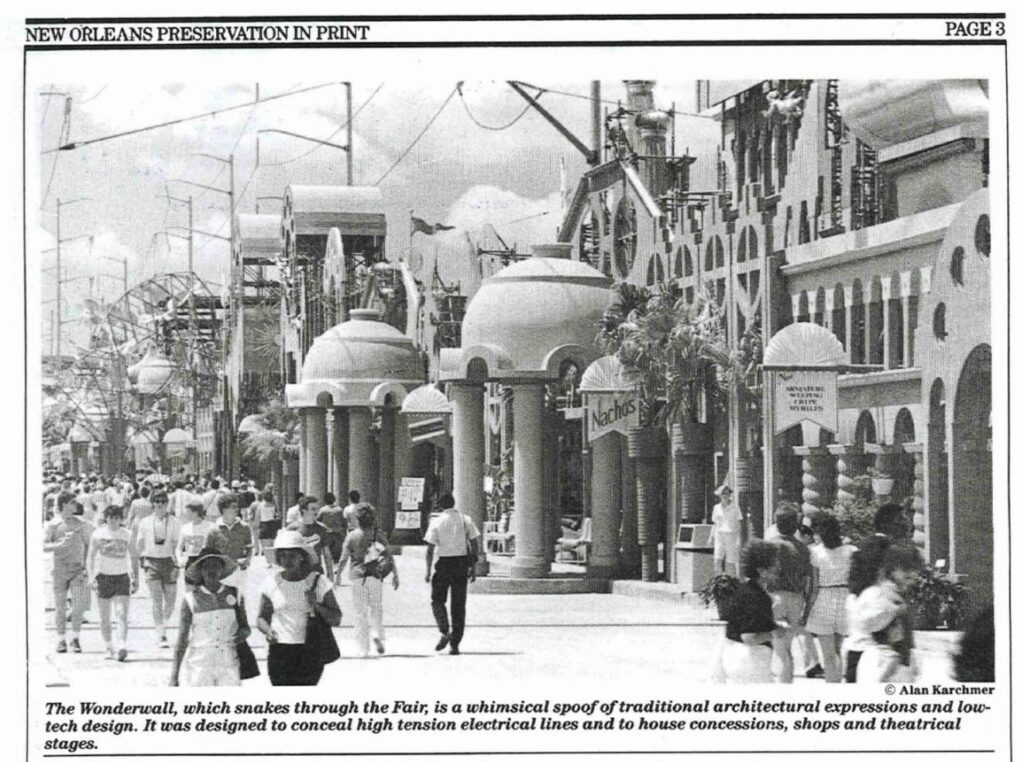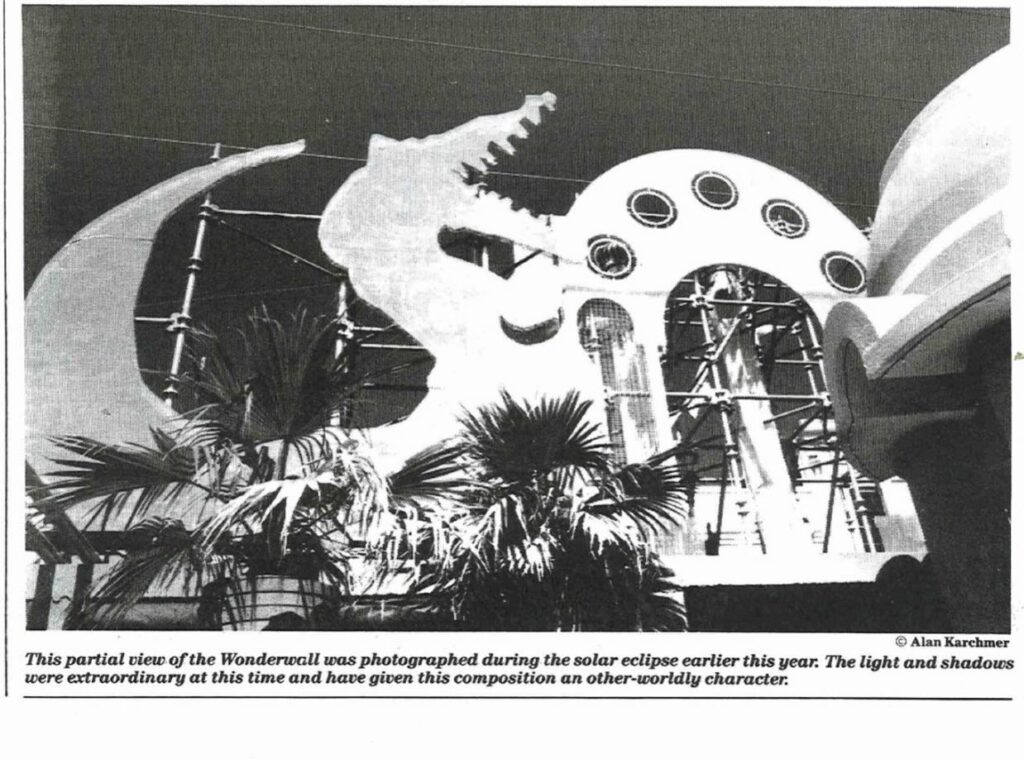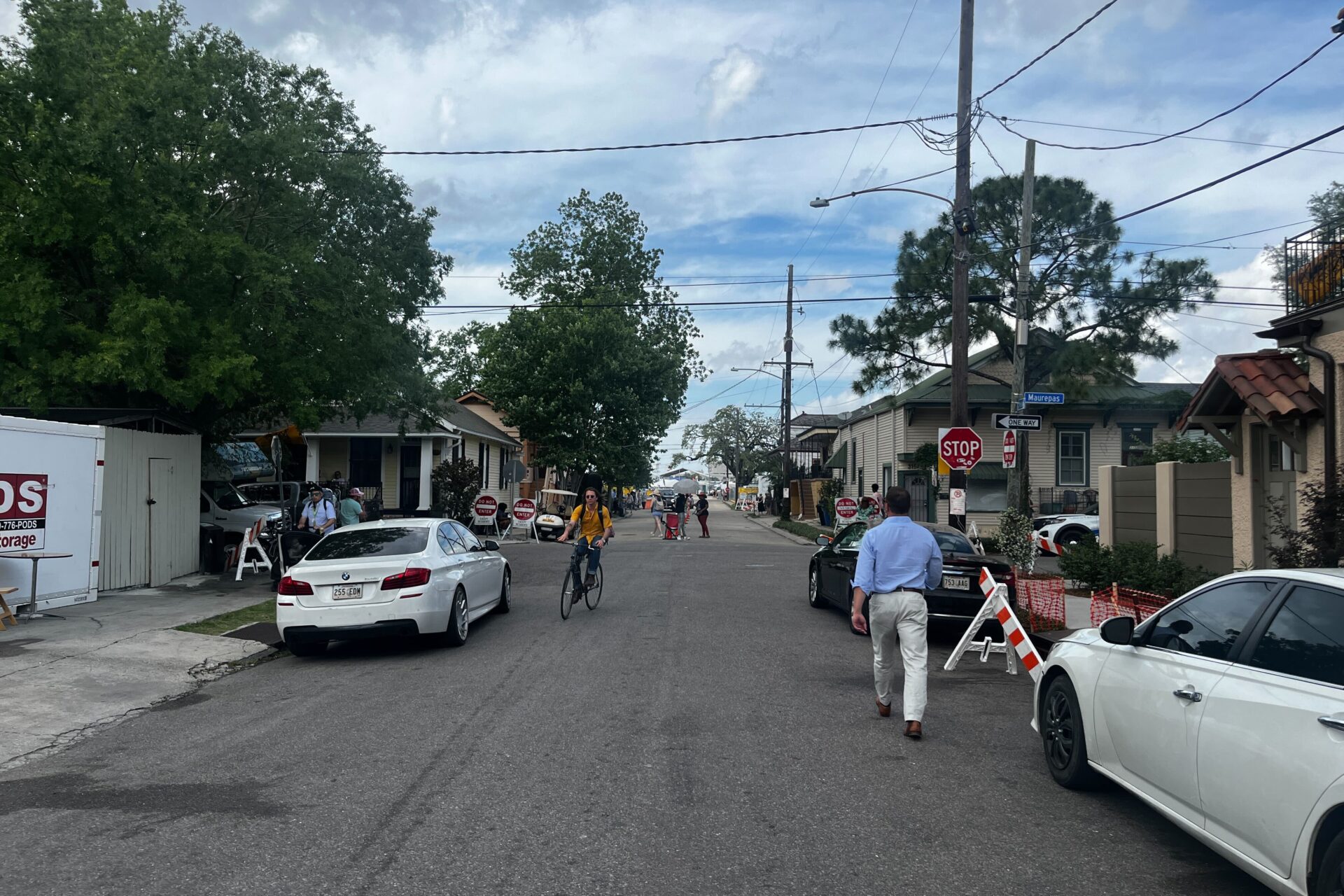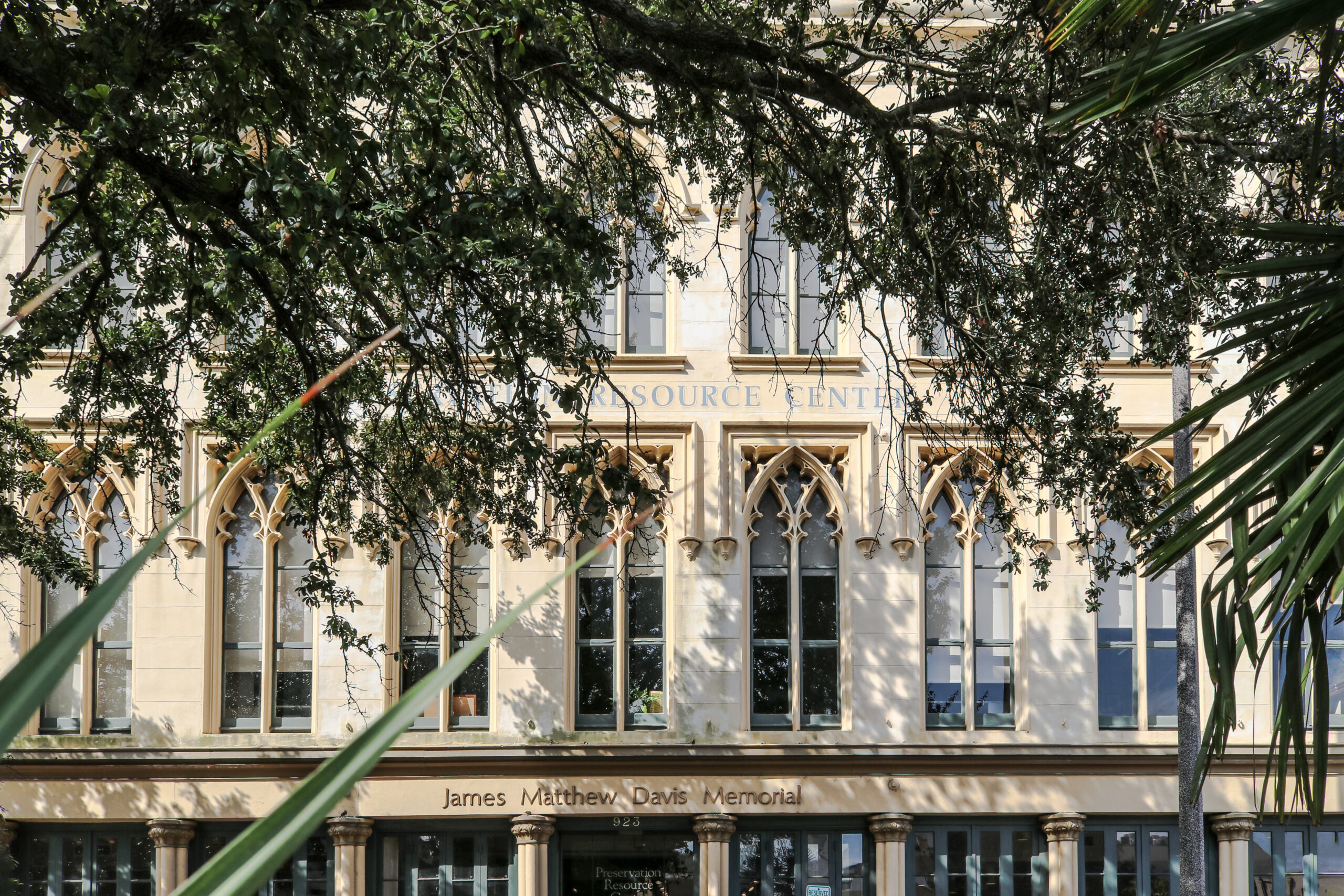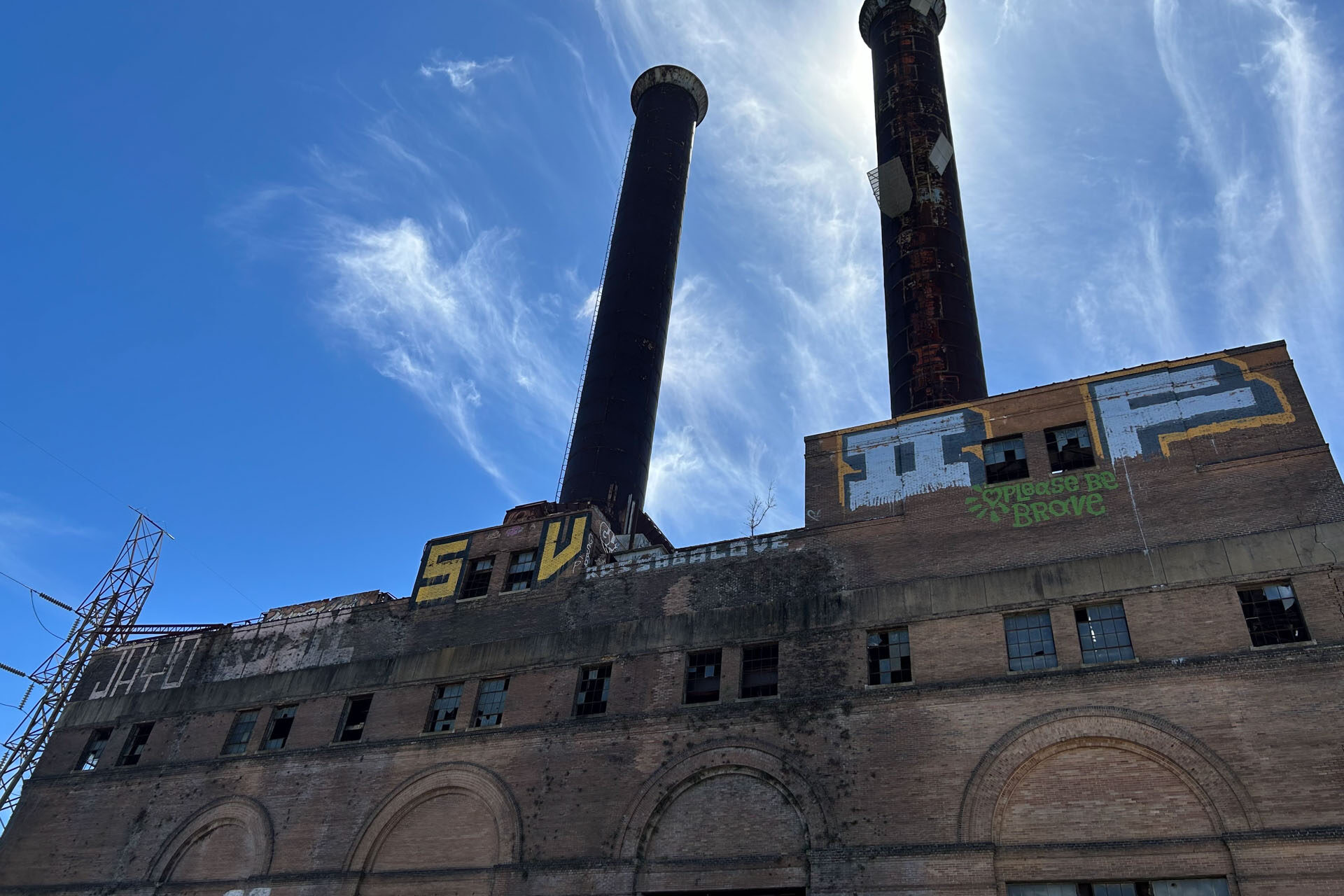40 years ago this week, the Louisiana World Exposition — the last World’s Fair held in the United States — opened in New Orleans’ Warehouse District.
The expo opened on May 12, 1984 with initial fanfare that attracted thousands of guests with concerts, fireworks, food, country exhibits, and other dazzling attractions. The Preservation Resource Center also had an exhibit titled “Living in New Orleans,” which featured a restored 1840s Creole Cottage that was relocated inside the fair’s Great Hall.
“LWE representatives see the Fair contributing to the long range plans established by the Preservation Resource Center in the Warehouse District Study,” wrote Barry Smith in a 1983 issue of Preservation in Print. Before the fair, the PRC-led study argued the economic and architectural benefits of preserving and redeveloping historic buildings in the formerly industrial neighborhood. Several historic buildings were then renovated for use by the fair, and redeveloped into commercial and residential buildings after the final guests passed through the turnstiles.
Crowds had dwindled by the end of the fair’s six-month run, and the lower-than-projected attendance caused the event itself to be a financial disaster. Its aftermath, however, left a long-lasting impact on the Warehouse District and the city of New Orleans.
“Based on this event and its investment, 14 separate structures were renovated,” wrote Jim Amdal in our November 1985 issue. “The Federal Fibre Mills, the Montgomery and Mississippi Warehouses, the 700 block of South Front Street and numerous other structures were rehabilitated for use by the Fair. It not only served as a major catalyst for renovation activity, but it brought hundreds of thousands of people, both Orleanians and tourists into the Warehouse District. This historic resource served as a focus of activity and interest.”
In addition to a renewed interest in the historic Warehouse District, the fair shifted the view of New Orleans’ riverfront as an industrial area into one to be enjoyed for cultural and recreational use.
Although most of the whimsical temporary structures built for the fair were demolished afterwards, several physical reminders still remain today. The Ernest N. Morial Convention Center originally served as the Fair’s Great Hall. One of the fair’s famous gondolas — once transporting visitors high above the river — now sits in front of Nesbit’s Poeyfarre Street Market. Piazza d’Italia was designed by architects Charles Moore and August Perez & Associates and dedicated before the fair in 1978, but the noteworthy Postmodern-style public space served as a backdrop for the event and also as the inspiration for its “Wonderwall,” which was also designed by the same architects.
Dee Allen is PRC’s Communications Associate and Staff Writer for Preservation in Print.
